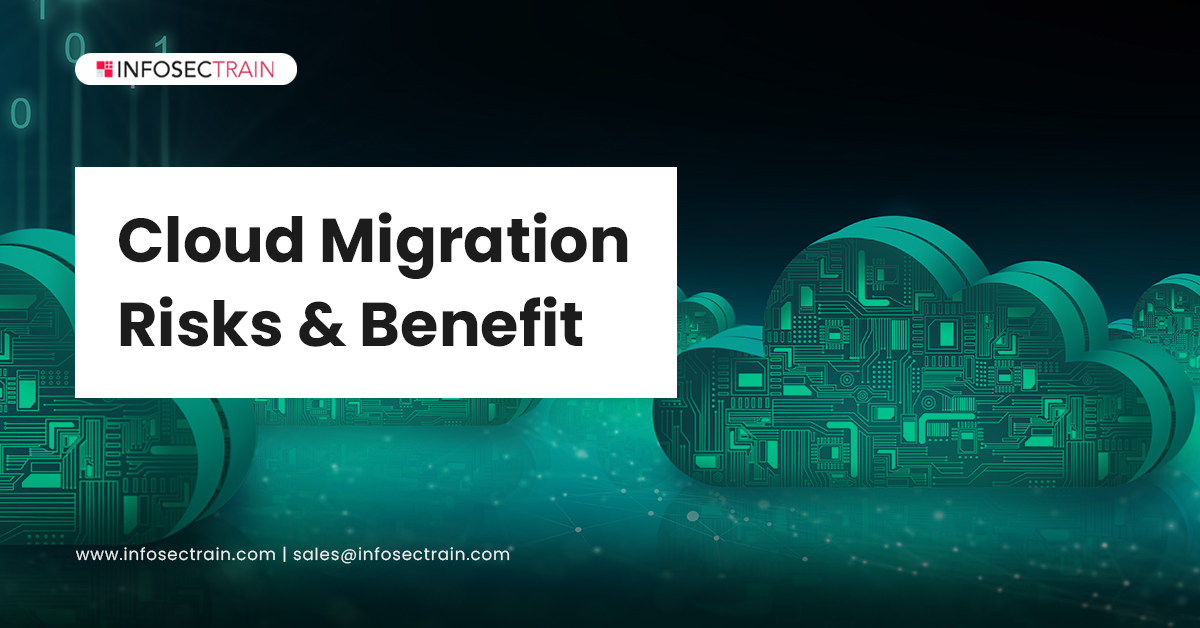Cloud Migration Risks & Benefits
Cloud technology and its practical applications can be found in a variety of industries. With each passing year, more and more organizations are incorporating them into their operations. This article will discuss various risks and benefits of cloud migration.

What is cloud migration?
Cloud migration, in simple terms, is the process of migrating data, apps, or other business components to a cloud computing environment. Many of our companies are still having trouble moving workloads from their on-premises infrastructure to the cloud. We term it migration when moving enterprise workloads to private or public clouds. Understanding enterprise workloads and their characteristics are vital in determining whether they should be hosted on-premises or in the public cloud.
Most firms opt for public cloud architecture to move their data, applications, and information from a private server or local, on-premises data center. Like each cloud migration process, each business is unique, and the number of resources provided in each project determines the complexity of cloud migration.
Major risks in cloud migration:
An effective cloud migration strategy would not totally eliminate all the challenges and potential issues. The following are some of the risks that come with cloud migration:
- Migrating large databases is complex: It is difficult to move a database, especially if there is a lot of data involved. Physical data transfer options, such as transferring data into a hardware appliance, are available from some cloud providers, and data can be transferred over the Internet as well. Data migration, regardless of the method, might take a long time.
- Incompatibility with present architecture: Many businesses have discovered that one of the most significant hazards they encounter during cloud migration is the complexity of their current IT architecture. It slows down their migration because they need to locate people with suitable IT expertise to fine-tune the entire infrastructure for the cloud.
- Visibility and control are insufficient: Take complete management of your on-premises resources, which include data centers, networks, and physical hosts. However, when using external cloud services, accountability for a few policies is transferred to the cloud service provider. Therefore, the company needs visibility into its public cloud workloads.
- Continued operation: During the migration, a company must ensure that its present systems remain functioning and accessible. To maintain ongoing service, they will require some overlap between on-premises and cloud; for example, before shutting down an existing database, they will need to copy all data in the cloud. Businesses usually need to move in small increments rather than all at once.
Benefits of cloud migration:
A cloud migration enables your company to expand and flourish without disrupting its current infrastructure. As a result, your data and applications can expand without affecting your business’s performance or customer experience. A few of the benefits of cloud migration are:
- Cost-effective: It is cost-effective to move, migrate, and modernize applications to the cloud. As a result, we may reduce our expenses, particularly in the public sector and in terms of OpEx (Operational Expenditure), by allowing our cloud providers to handle much of the workload management.
- Security: One of the fantastic things about cloud computing is that we don’t have to worry about many of the essential services we previously would have had to care about. Many of our cloud service providers now handle most of the security concerns. These services can be supplied here if you have compliance regulations or data concerns.
- Scalability: We can use the basic services in those models, but we also have the flexibility to use bare metal and even virtual machines because the cloud strongly relies on virtualization and the capability to do things like Cloud Foundry and Kubernetes.
- Accelerated adoption: We do not have to worry about that at the application level if we use cloud services like service routing, service discovery, and load balancing. Therefore, it is easy to recognize why businesses are eager to migrate workloads from traditional settings to the cloud.
How can InfosecTrain help you in cloud migration?
Cloud migration is unavoidable for many businesses these days. However, completely migrating their traditional workloads to the cloud can be overwhelming for some firms. InfosecTrain is there to help you out in this journey. We provide various professional cloud certification training courses to assist you in migrating your different traditional workloads to the cloud so you can minimize the risks that come along with cloud migration and leverage the benefits to the fullest. Enroll now to get the professional badges and the skills you will need to make this a reality.







 1800-843-7890 (India)
1800-843-7890 (India)